
What’s encouraging brands to spend countless hours and millions of dollars tic-tac-toeing for the title of 'world's thinnest watch' over the last few years? Here’s what we found out
Luxury watches might not be the first place you go when you're looking for a fiercely fought, multi-year grudge match that pushes the realms of possibility, but that's precisely what's taking place in the normally placid factories and workshops of highly regarded Swiss brands.
We're in the middle of a battle over shavings of space. At the top of the pack, each millimeter of thickness costs roughly one million dollars. The main contestants in this ultra-thin arena are the legacy champions, Piaget, the challengers, Bulgari and the surprise contenders Richard Mille. Of course, there are other players — Jaeger-LeCoultre and Audemars Piguet make excellent slender calibres, but the first three marques have, over the last few years, staked their claims to the 'thinnest'.
Even though these watches might just tell the time (though some can do a whole lot more), it's worth noting that watchmakers consider making something ultra-thin a complication in its own right, as every saving is the result of new technologies and ingenious engineering solutions. In this arena, the calibre defines the watch.

Historically, the sleekness of a dress watch, or the petite profile of a woman's watch were enhanced by the thinner, smaller movement. In a time before quartz technology, this fundamental capability affected the type of watches you could make.
The original batch of ultra-thin watches, popularized in the 1950s and 60s were developed as a technical solution to a desired aesthetic, a slimmer movement meant a more elegant timepiece.
Today, the situation is a little different. Thanks to quartz, the traditional constraints around the size and thickness of a movement have disappeared. So why are we seeing this three-way race to the razor's edge? In short—competition, bragging rights and a side serve of technological progress.
How do these watches fare in the real world, Asher Rapkin, co-founder of watch community Collective Horology thinks they serve a dual purpose: "Personally, I’m attracted to watches that have a point of view. That can come to life through aesthetics, through technical innovation, or both. The concept of ultra-thin watches is a fun one: it’s the exploration of a superior solution to a problem that no one really has. It’s also a way of exploring the ideas of accuracy and precision in a watch beyond functional timekeeping. So, depending on how one collects, I definitely think there’s a meaningful place for ultra-thin watchmaking outside of the 'record-breaking' narrative."
Shaving fractions of a millimeter off a watch is a demonstration of credibility and capability — far more so than the goal of creating a watch that slips under the cuff. Some brands are fighting battles over accuracy, complexity or whatever. But at the moment, Piaget, Bulgari and Richard Mille are in a three-way tussle for the title slim king.
Piaget
Piaget are the incumbent rulers of ultra-thin watches, first definitively claiming the title back in 1957 with the legendary calibre 9P. This hand-wound movement measured in at 2mm thin and set the benchmark for thin watches for decades to come. In 1960, they released the 12P, which measured 2.3mm, but had the very real benefit of being automatic, powered by a space-saving micro-rotor.
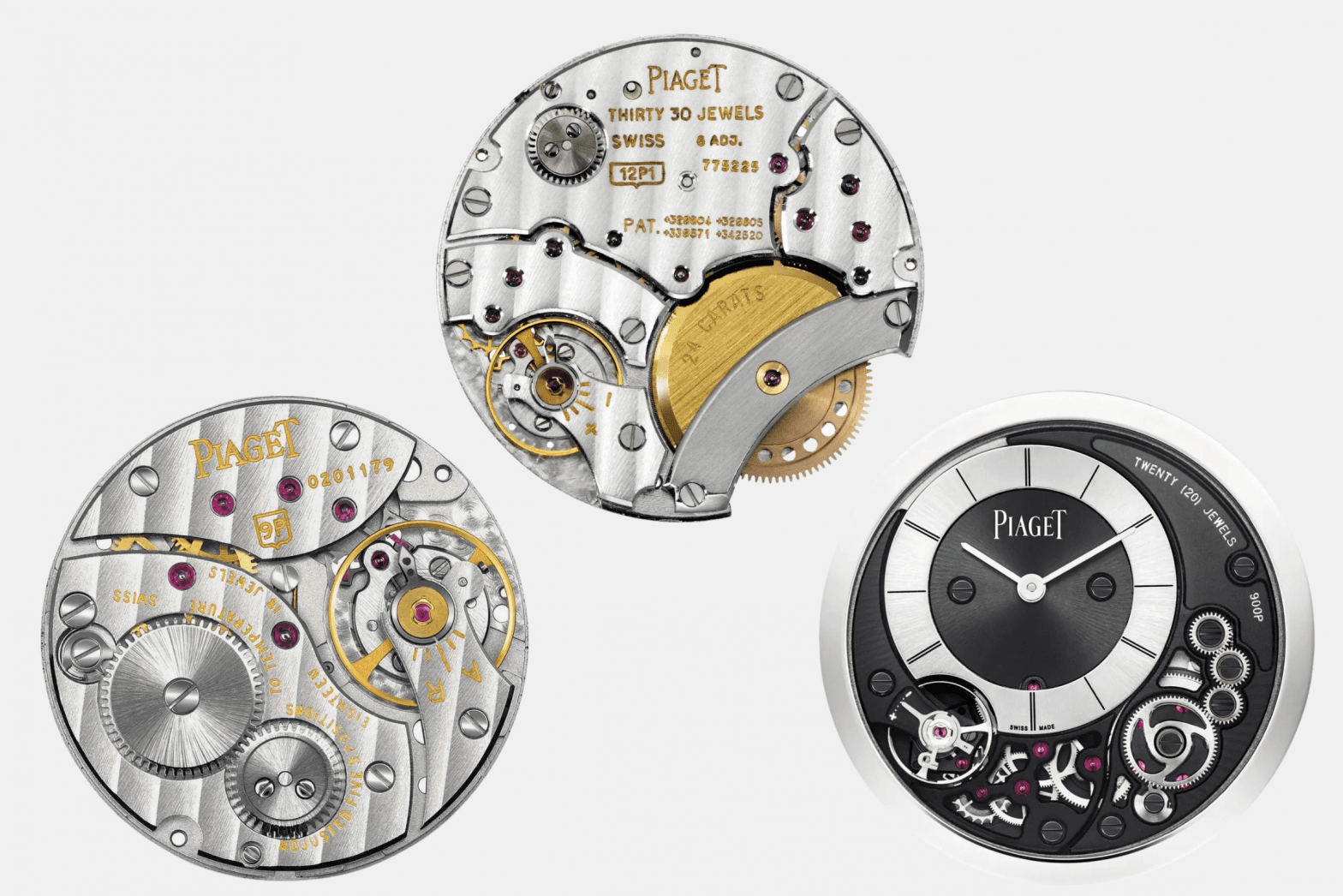
With these two calibres at their disposal, Piaget achieved some truly remarkable feats — and slender watches were just the beginning. Space saved inside the case allowed the brand to get creative with dials, specifically dials crafted from hard and semi-precious stones. Coral, Onyx, Lapis Lazuli and beyond — these rare and colorful minerals quickly became a real calling card of Piaget, and their slender calibres allowed them to achieve it.
More recently, Piaget has expanded on their ultra-thin legacy. In 2013, they debuted the 900P, which saw the cased watch measure in at a mere 3.65mm thin, while still offering a solid 40 hours of power reserve. Piaget achieved this by integrating all the casing elements into the mechanism—the caseback serves as the baseplate of the movement, and the hands sit below the main bridges to allow a closer fit for the crystal.
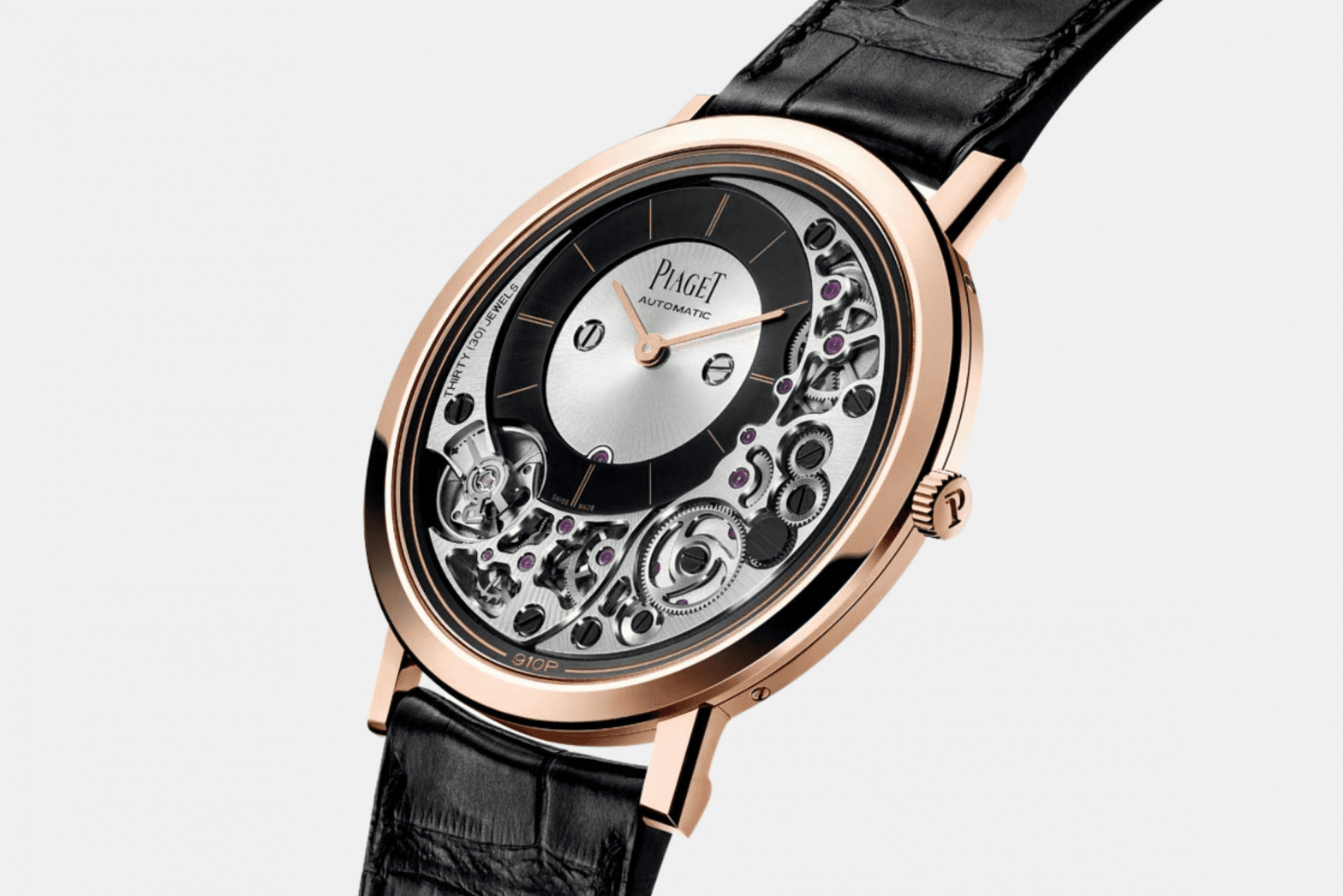
This achievement was followed by the Altiplano Ultimate 910P in 2017, a 4.30mm automatic which reclaimed the 'world's thinnest' crown from Bulgari (more on that shortly). In 2018, they doubled down with the Altiplano Ultimate Concept Watch, which dramatically improved on previous attempts, coming in at 2mm — including the case. In 2020, this concept watch became — almost unbelievably — a commercial reality. To prevent the watch from snapping on your wrist, the case is made from cobalt alloy, which ensures a wearable degree of rigidity.
From 2020 until 2022, this expression of Piaget's slender prowess stood tall, until Bulgari snatched the crown.
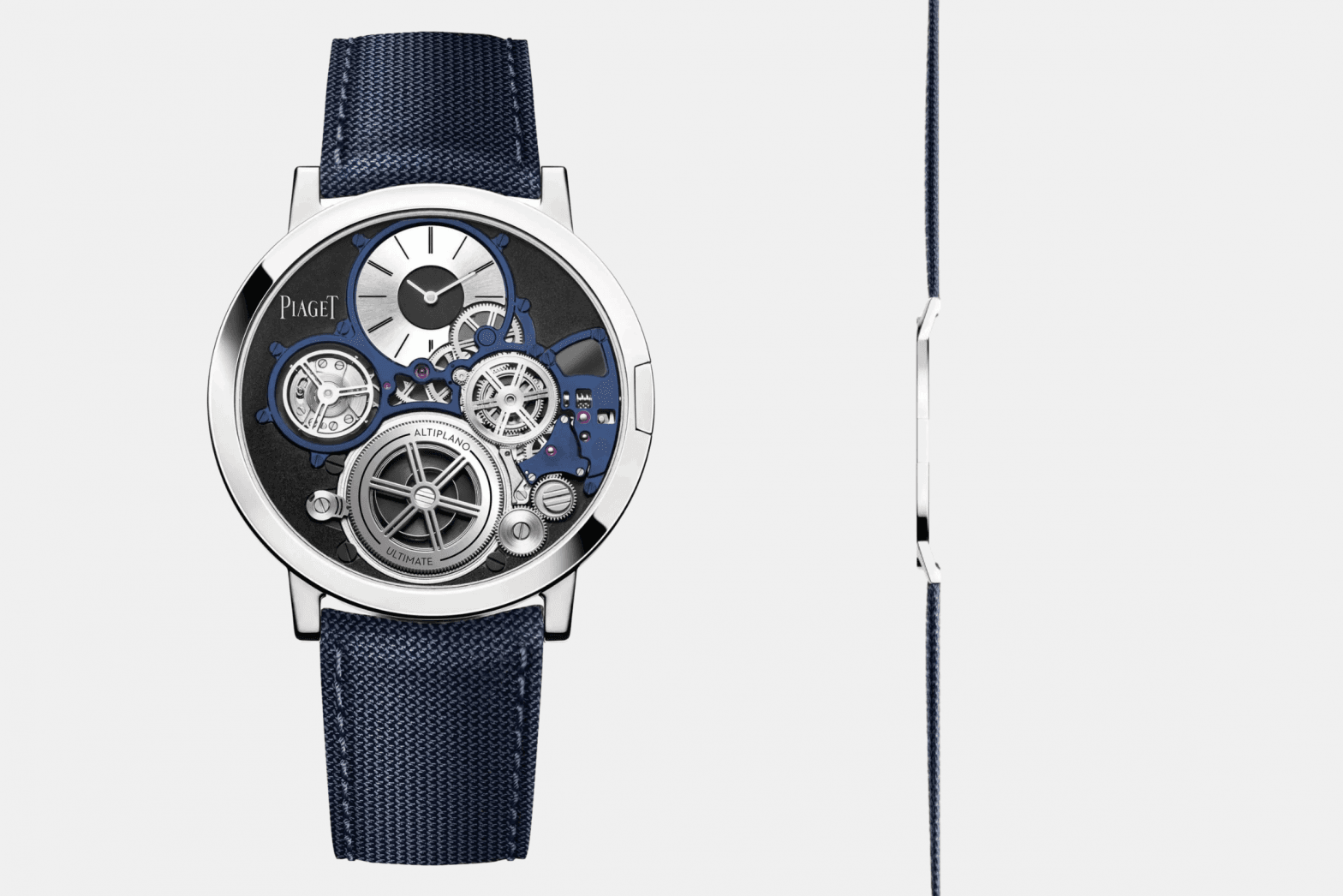
Bulgari
As a brand, Bulgari doesn't have a long history in thin watchmaking, in fact, they are relative newcomers to the watch space, but they've been making up for lost time, rapidly establishing themselves as masters in the space, providing the contemporary counterpoint to Piaget's classism. This journey started in 2014 with the Octo Finissimo collection, a modernist masterpiece of slender watches. It debuted with a 1.95mm thick tourbillon movement, followed in 2016 by the thinnest minute repeater, with a movement measuring 3.12mm, and a cased thickness of 6.85mm. The collection went mainstream in 2017 with the automatic version, which, for a while, was the thinnest auto on the market at 5.15mm, and a 2.23mm calibre. In 2018, the brand broke its own tourbillon record with a 3.95mm thick automatic tourbillon. In 2019, they decided to casually release an automatic chronograph (and GMT) calibre that measures 3.3mm. In 2020, they combined slender tourbillon and chronograph in a skeletonized movement that clocked in at 3.5mm. In 2021, they added even more complexity with a perpetual calendar calibre that is only 2.75mm thick, and 5.00mm cased.
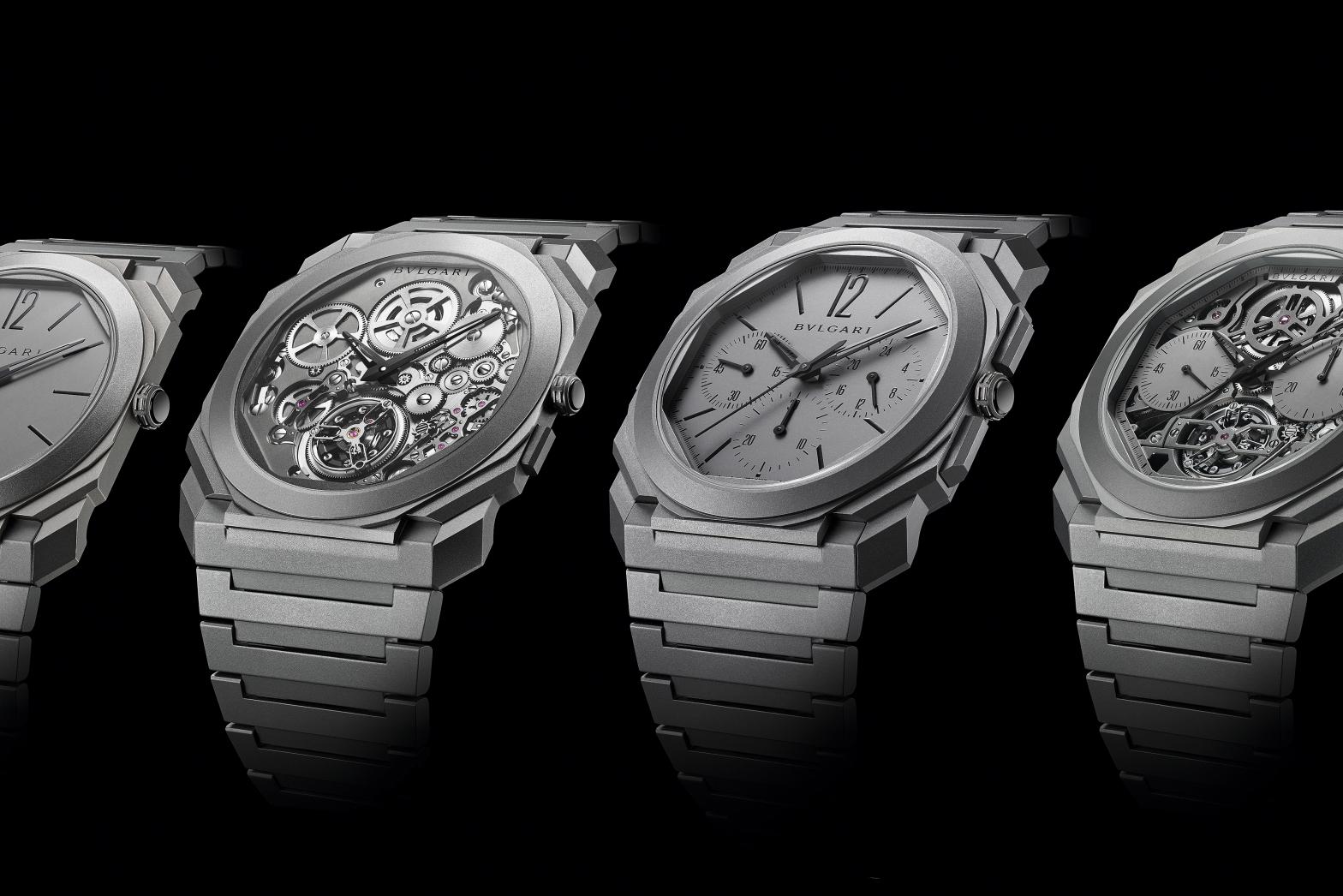
In less than a decade, Bulgari has amassed, in a seemingly effortless manner, one of the most comprehensive collections of ultra-thin mechanisms. Not just a single watch, but a dazzling array of complications. On its own, thin watchmaking is hard, but to integrate chronographs, minute repeaters and the rest into the array — that's stunning.

Since 2014, the Octo has claimed eight records, and the most recent being the Octo Finissimo Ultra, which edged Piaget's contender off top billing by .20 of a millimeter. Bulgari achieved this by integrating the movement into the case, which is made from titanium and tungsten carbide. To save space Bulgari has sacrificed a traditional crown, using knurled wheels for winding and setting. The escapement has also been pared back in the name of the economy of space.

Bulgari and Piaget have spent countless hours and millions of dollars tic-tac-toeing for the title of 'world's thinnest watch' over the last few years, each honing their craft, and advancing the craft along the way. So it must have come as a great surprise when Richard Mille blew them both out of the water.
New York Based visual artist and collector Phillip Toledano credits Bulgari for energizing the space; “Besides loving the way the collection looks, the Octo Finissimo started a war that no one knew we needed. It's similar to hypercars, someone always needs to be faster. Or in this case thinner. Of course, Richard Mille couldn't resist the unspoken challenge.” Which brings us to the most recent entry into this exclusive club.
Richard Mille
In July 2022, Richard Mille left both Bulgari and Piaget in the dust, with its surprise debut into the world of ultra-thin watches, the UP-01 Fighting for the Last Hundredths. True to its name, it shaves .05mm off the total width of Bulgari's champ, and is 2.5mm slimmer than Piaget's best.
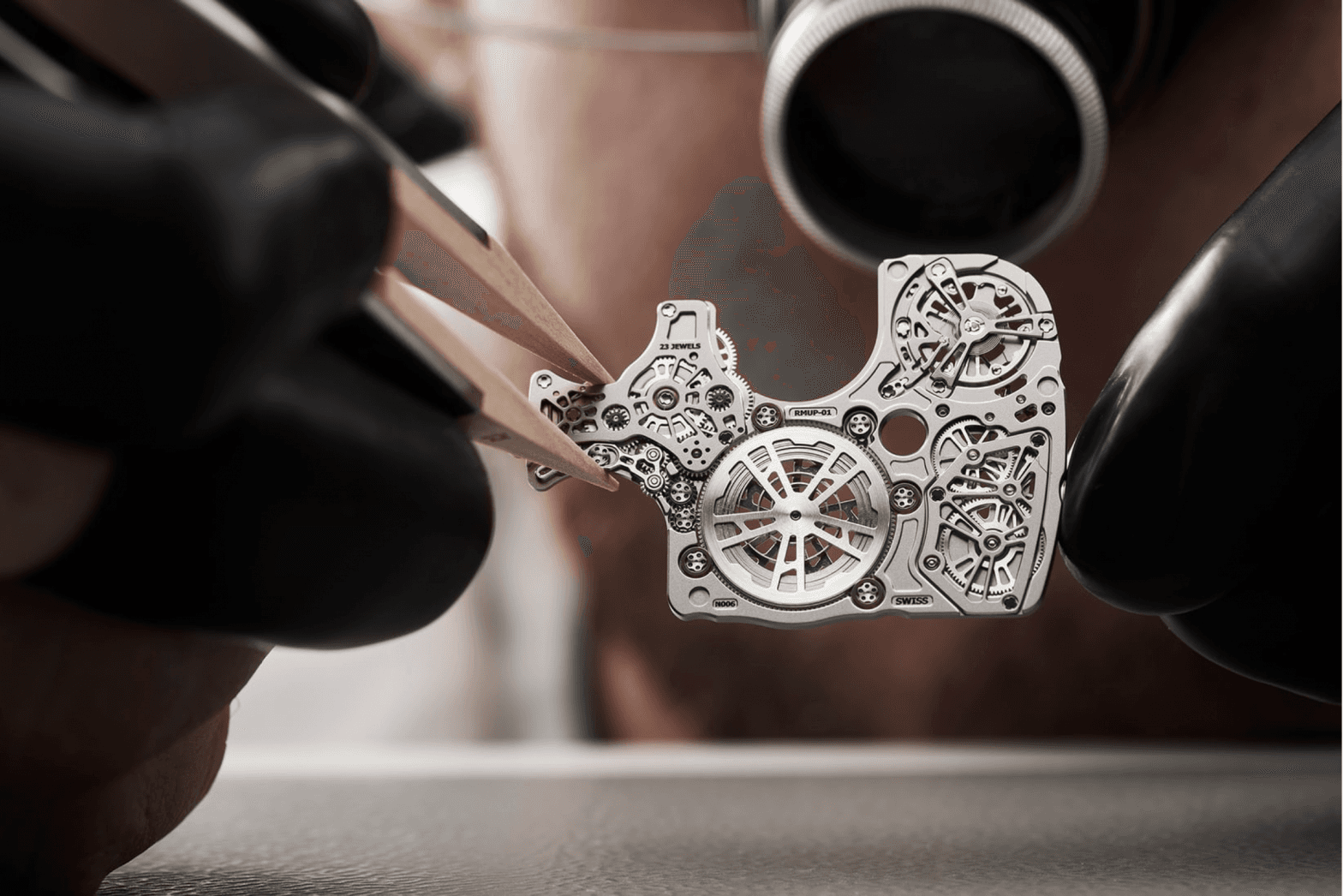
Richard Mille has strong form when it comes to technical watchmaking — ultra-light cases, cutting-edge materials, shock-resistant tourbillons. You name it, Richard Mille has mastered it. Now they can add the world's thinnest watch to their list of achievements.
The most remarkable part of Richard Mille's new record breaker isn't it's literally wafer-thin nature, it's the fact that, unlike the other watches we've discussed, the calibre is completely separate and can be removed from the case. Richard Mille is revered for their technical prowess, and their seemingly painless mastery of the ultra-thin discipline proves that the reverence is deserved.
As a category, mechanical ultra-thin watches have existed for the last 60 or so years. For 50 of those years, the conversation was dominated not just by a few makers, but by a few movements. The last 10 years has seen an explosion of activity. A dynamic and ongoing contest between the legacy masters Piaget, and the determined newcomer Bulgari has massively committed to an entire suite of thin complications. Richard Mille has just emerged—out of nowhere—to claim the prize. The 9P's long-standing record of 2mm has been repeatedly smashed, not just for calibres, but for cased-up watches. Every year or two, we're seeing a further reduction in scale, and brands are working harder and harder to shave of fractions of a millimeter wherever they can. It's not a question of if someone will better Richard Mille's effort; it's a question of who, and when.
The first wave of ultra-thin watches were made to serve style. The current batch is made to break records and advance technology. Regardless of whether or not these hyper-expensive hyper-watches are practical or not, it's safe to say this is the most exciting battle in horology right now.
